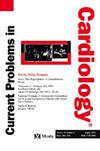胸腹血管内主动脉修复术患者的植入后综合征:综合系统回顾和荟萃分析
IF 3.3
3区 医学
Q2 CARDIAC & CARDIOVASCULAR SYSTEMS
引用次数: 0
摘要
植入后综合征(PIS)可导致长期住院和主要不良心血管事件(MACE)。本系统综述和荟萃分析调查了腹部(EVAR)和胸部血管内主动脉修复(TEVAR)后PIS的临床概况。综合文献检索发现1463项研究,其中16项(14项为回顾性研究,2项为前瞻性研究)符合纳入标准。使用随机效应模型对这些研究的数据进行汇总,以计算合并风险比和平均差异。分析纳入2890例患者(男性84.7%,平均年龄63.3岁±18.8岁),其中882例出现PIS。两组在人口统计学、人体测量、危险因素、病史或慢性药物治疗方面没有发现显著差异。发热(高于38°C)是最常见的临床表现,在75-100%的PIS病例中观察到。正如预期的那样,与非PIS患者相比,PIS患者的术后白细胞(WBC)和血小板(PLT)水平更高。有趣的是,PIS组术前WBC和PLT计数明显更高(分别为0.001和0.002)。PIS患者更容易接受聚酯移植(p=0.003),而使用聚四氟乙烯假体的患者发生PIS的可能性更小(p=0.04)。与非PIS组相比,PIS组的住院时间更长(p<0.001)。虽然大多数研究报告没有明显的PIS对结果的影响,但两项研究报告了更高的MACE率。需要更大规模的前瞻性研究来确定PIS风险患者的最佳管理策略。本文章由计算机程序翻译,如有差异,请以英文原文为准。

Post-implantation syndrome in patients undergoing thoracic and abdominal endovascular aortic repair: Comprehensive systematic review and meta-analysis
Post-implantation syndrome (PIS) can lead to prolonged hospitalization and major adverse cardiovascular events (MACE). This systematic review and meta-analysis investigated the clinical profile of PIS after abdominal (EVAR) and thoracic endovascular aortic repair (TEVAR).
A comprehensive literature search identified 1463 studies, of which 16 (14 retrospective and 2 prospective) met the inclusion criteria. Data from these studies were aggregated using a random effects model to calculate pooled risk ratios and mean differences. The analysis included 2890 patients (males 84.7%, mean age 63.3 years ± 18.8) with 882 experiencing PIS. No significant differences were found in demographics, anthropometric measurements, risk factors, medical history, or chronic medical treatments between the two groups. Fever (above 38°C) was the most frequent clinical manifestation, observed in 75-100% of PIS cases. As expected, higher levels of post-procedural white blood cells (WBC) and platelets (PLT) were shown in PIS patients compared to non-PIS patients. Interestingly, pre-procedural WBC and PLT counts were significantly higher in the PIS group (p<0.001 and p<0.002 respectively). Patients with PIS were more likely to receive polyester graft (p=0.003), while those with polytetrafluoroethylene prostheses were less likely to develop PIS (p=0.04). The PIS group exhibited longer hospital stays compared to the non-PIS group (p<0.001). While most studies reported no evident PIS impact on outcomes, two studies reported higher rate of MACE. Larger prospective studies are needed to determine the optimal management strategies of patients at risk of PIS.
求助全文
通过发布文献求助,成功后即可免费获取论文全文。
去求助
来源期刊

Current Problems in Cardiology
医学-心血管系统
CiteScore
4.80
自引率
2.40%
发文量
392
审稿时长
6 days
期刊介绍:
Under the editorial leadership of noted cardiologist Dr. Hector O. Ventura, Current Problems in Cardiology provides focused, comprehensive coverage of important clinical topics in cardiology. Each monthly issues, addresses a selected clinical problem or condition, including pathophysiology, invasive and noninvasive diagnosis, drug therapy, surgical management, and rehabilitation; or explores the clinical applications of a diagnostic modality or a particular category of drugs. Critical commentary from the distinguished editorial board accompanies each monograph, providing readers with additional insights. An extensive bibliography in each issue saves hours of library research.
 求助内容:
求助内容: 应助结果提醒方式:
应助结果提醒方式:


